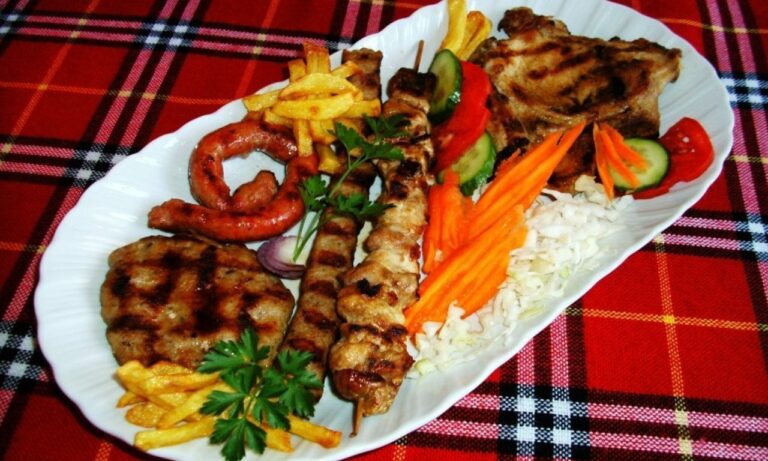Introduction: Bulgaria’s Culinary Heritage
Bulgarian cuisine is a delightful blend of Mediterranean, Balkan, and Eastern European flavors. The country’s culinary heritage is rich and diverse, with hearty meat dishes, fresh salads, savory pastries, and refreshing soups. The use of local ingredients, such as fresh vegetables, herbs, and spices, is central to Bulgarian cuisine.
A typical Bulgarian meal is a feast for the senses, with a range of flavors and textures that reflect the country’s varied landscapes and cultural influences. From the fresh and light flavors of Shopska salad to the rich and hearty Kavarma stew, Bulgarian cuisine offers something for every taste and occasion.
Shopska Salad: A Fresh and Flavorful Side Dish
Shopska salad is a Bulgarian classic and a popular side dish served in restaurants and homes across the country. It is a refreshing and colorful mix of chopped tomatoes, cucumbers, onions, and peppers, topped with crumbled white cheese and a sprinkle of parsley. The salad is dressed with a simple vinaigrette of olive oil and vinegar.
The key to a good Shopska salad is the freshness of the ingredients. Tomatoes, cucumbers, and peppers are a staple of Bulgarian gardens, and their sweet and tangy flavors are perfectly complemented by the salty cheese. The salad is usually served as a side dish with grilled meat or as a light lunch on its own.
Kavarma: A Hearty Meat Stew with Rich Flavors
Kavarma is a traditional Bulgarian stew made with chunks of pork or beef, peppers, onions, and tomatoes. The meat is marinated in red wine and spices and slow-cooked until tender and flavorful. The dish is often served with a side of potatoes or rice.
The secret to a good Kavarma is the quality of the meat and the rich blend of spices used in the marinade. Bulgarians take pride in using local ingredients, such as sweet paprika, thyme, and bay leaves, to create a unique and delicious flavor. Kavarma is a perfect comfort food for cold winter nights, and its hearty flavors are sure to satisfy any appetite.

